#de politie
Text
why does k3 have to have a simping for the police song that kinda goes off
10 notes
·
View notes
Photo
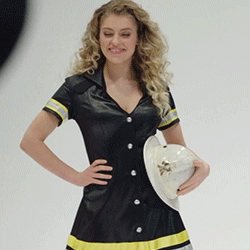





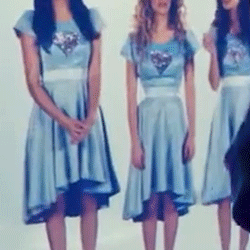

𝙹𝚞𝚕𝚒𝚊 𝚒𝚗 𝚘𝚞𝚍𝚎 𝙺𝟹-𝚘𝚞𝚝𝚏𝚒𝚝𝚜
#k3#k3edit#julia boschman#k3 een nieuw begin#k2 zoekt k3#kom erbij show#de politie#bij de politie#jij bent mijn gigi#roller disco#play o#meiden van de brandweer#liefde is overal#de 3 biggetjes#my gifs
17 notes
·
View notes
Audio
De politie uit K3 en de vrolijke noten
1 note
·
View note
Text
Best KKJ song bracket!


Link to the full bracket!
7 notes
·
View notes
Text
Motorrijder en fietsers komen in botsing in Andijk, twee personen naar het ziekenhuis
Andijk – Hulpdiensten werden maandag avond rond 22:20 opgeroepen voor een ongeval op de Gerrit de Vriesweg in Andijk. Met nog onbekende oorzaak kwamen daar twee fietsers en een motorrijder met elkaar in botsing.
Na de melding kwamen drie ambulances aanrijden voor de slachtoffers, waarna de weg enige tijd werd afgesloten
Drie personen raakte gewond, waarvan twee voor controle naar het ziekenhuis…

View On WordPress
0 notes
Text
Doljean arestat preventiv pentru că a agresat un echipaj de poliție
Doljean arestat preventiv pentru că a agresat un echipaj de poliție
Un bărbat în vârstă de 48 de ani, din comuna Bulzeşti, județul Dolj, a fost arestat preventiv, fiind acuzat că a agresat un echipaj de poliție care încerca să pună în aplicare un ordin de protecție.
Potrivit IPJ Dolj, în data de 5 decembrie, un bărbat din comuna Dobreţu, judeţul Olt, a sesizat poliţiştii din Pieleşti cu privire la faptul că, pe o stradă din comuna Bulzeşti, o femeie este lovită…

View On WordPress
#arestat#arestat preventiv#barbat#bulzesti#Centrul Medical de Permanenţă Bulzeşti#Dolj#dosar penal#echipaj de politie#ordin de protectie
0 notes
Text








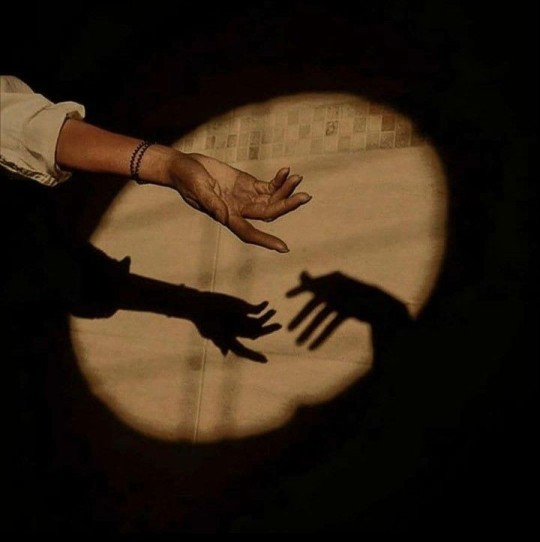




But I still don't know how to hold your hand without reading the ugliness of my own, But I can't contain my soul from enveloping yours !


Web weaving about holding hands an emotion
{quotes:Mary Ruefle/uk/Francis Forever Song by Mitski/The Hand Has Twenty-Seven Bones by Natalie Diaz/Hélène Cixous, from “Olivier De Serres- A Single Passion Two Witnesses,” Love Itself: In the Letter Box (Polity Press, 2008) /uk /Saadi Youssef, from ‘Solos on the Oud’, Without an Alphabet, Without a Face: Selected Poems (trans. Khaled Mattawa) /@fatimaamerbilal from her garden yearns more for visitors than water. }
#web weave#web weaving#holding hands#dark academia#dark acadamia aesthetic#dark acadamia quotes#classic literature#literature#lit#light acadamia aesthetic#light academia#cottage academia#cottagecore#poetry#writing#words#paintings#writers and poets#books and libraries#spilled thoughts#spilled ink#romanticism#grey academia#grey moodboard#chaotic academic aesthetic#spilled writing#quotes#quotation#writers corner
7K notes
·
View notes
Text
Vidne så mulig indbrudstyv
Vidne så mulig indbrudstyv
På Hans De Hoffmanns Vej i Fredericia har de været indbrud. Gerningsmanden er muligvis blevet spottet af et vidne.
Indbruddet er sket mandag mellem klokken 10:00 – 12:00, hvor man har knust en kælderrude, oplyser vicepolitiinspektør Finn Ellesgaard.
Et vidne har i samme tidsrum set en person gå op og ned af vejen flere gange.
– Han har ikke set vedkommende har lavet indbruddet, men det er en…

View On WordPress
0 notes
Photo

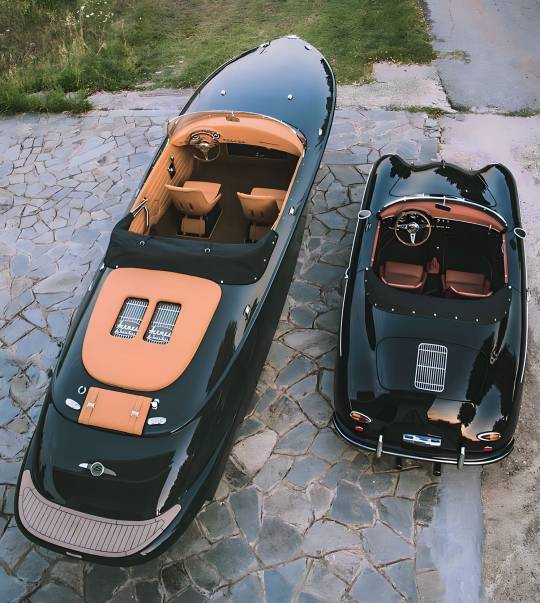

Un bateau inspiré de la Porsche 356 Roadster de 1959 pour évoquer de la nostalgie ! Conçu par l'architecte grec Nicolas Politis. - source Cars & Motorbikes Stars of the Golden era.
427 notes
·
View notes
Note
ik moet dit kwijt. Er is mij iets bizars overkomen en ik ben benieuwd hoe anderen zouden reageren.
‐-----------
Ik loop de jumbo uit en ik zie een jongeman met een fietsslot strugglen.
Ik zeg: goh, ben je nou een slot aan het doorknippen op klaarlichte dag?
Hij: ja, ik dacht dat het vast veel verdachter zou zijn als ik dit in het donker zou doen.
Ik: goh, slim! Daar heb je wel gelijk in
Hij knikt.
Ik: mensen zouden zomaar denken dat je een fiets aan het jatten bent joh.
Hij: ja, ik wil niet dat de politie gebeld wordt.
Ik: nee snap ik. Maar ik denk dat ik toch de politie ga bellen.
Hij: hoezo?
Ik: dit is namelijk. MIJN FIETS.
Hij is 'm toen geboekt en ik ben naar huis gefietst.
Uhm vraag. I guess.
Had jij deze man aangesproken?
Ja sowieso
Ja als het mijn fiets was.
Nee, ik had politie gebeld
Nee, ik had een winkelmedewerker of beveiliging gehaald maar geen politie.
#first of all ??? wat een ervaring#goed dat je m hebt aangesproken#polls#poll#peiling#nederland#nederlands#belgië#belgie#belgisch#fiets#stelen#dit is een perfecte voor deze tag btw ->#wat zou jij doen
46 notes
·
View notes
Text
Municipal vexillology in the United States is a disaster

Billings, Montana: this is not a flag, this is the logo of a fast food joint from the 80s somebody stuck on a tricolor

Annandale, Virginia: asymmetry in flags is very popular these days. it can look great when executed well. this is not executed well. the logo looks like something you would find on a shampoo bottle.

Des Moines, Iowa: this one just makes me dizzy
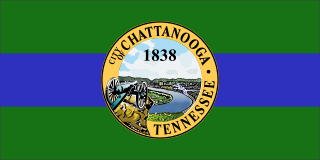
Chattanooga, Tennessee: short of putting the physical outline of your polity on a flag, putting your logo or seal on a flag, in full color, is one of my flag pet peeves. it's an unreadable mess. and the choice of colors on the stripes is also awful. what shade of blue even is that???
this is an even worse flag bc it replaced a perfectly decent, if not especially imaginative one, for this thing that looks like it was designed in Microsoft Word.

Grand Forks, North Dakota: speaking of flags that look like low-quality clip art.
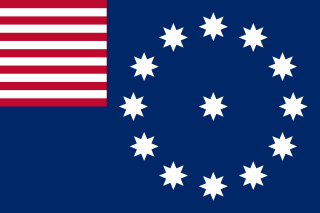
Easton, Pennsylvania: someone got very confused trying to design an American flag and I guess they kept it for the city flag.

Detroit, Michigan: wayyy too busy. Just, fuckin' like. Chill man.

Tampa, Florida: speaking of busy! the non-rectangular flag is cool, but unfortunately the choice of colors is ass.

Knoxville, Tennessee: once again with the shades of blue that are just... off. plus some truly strange choices regarding stripes.
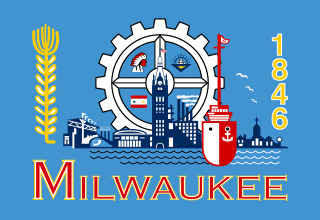
Milwaukee, Wisconson: I think what i hate most about this flag is that whoever designed it did so with clear effort and care and intentionality. they didn't just slap something together. they drew this lovingly. and not only is it completely chaotic and illegible as a flag, it does that stupid thing of putting the name of the place in massive letters across the bottom. even though this flag will only be flown in the city of milwaukee. i hate this flag so much.
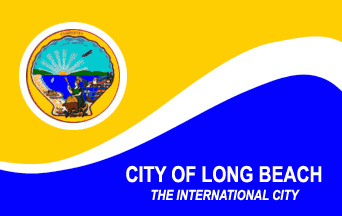
Long Beach, California: but the one I hate the most is this. It's not just that it's two almost perfectly complimentary colors that make it look like the whole flag is vibrating, it has a full-color city seal, which looks like garbage, plus the name of the city and its slogan. garbage-tier flag.
68 notes
·
View notes
Text
Best KKJ song bracket!


Link to the full bracket!
6 notes
·
View notes
Text
Grote brand op bedrijventerrein aan De Corantijn in Zwaag
Zwaag – zaterdag op zondag nacht rond 2.30 uur werden de brandweerlieden opgeroepen voor een brand aan De Corantijn in Zwaag. Omdat de vlammen al behoorlijk zichtbaar was, werd er direct ingeschaald naar grote brand.
In het pand zitten diverse bedrijven gevestigd, welk bedrijf in brand stond is nog onduidelijk.
De brandweer was snel te plaatsen en hadden de brand redelijk snel onder controle.…

View On WordPress
0 notes
Text
Coral today is an icon of environmental crisis, its disappearance from the world’s oceans an emblem for the richness of forms and habitats either lost to us or at risk. Yet, as Michelle Currie Navakas shows in her eloquent book, Coral Lives: Literature, Labor, and the Making of America, our accounts today of coral as beauty, loss, and precarious future depend on an inherited language from the nineteenth century. [...] Navakas traces how coral became the material with which writers, poets, and artists debated community, labor, and polity in the United States.
The coral reef produced a compelling teleological vision of the nation: just as the minute coral “insect,” working invisibly under the waves, built immense structures that accumulated through efforts of countless others, living and dead, so the nation’s developing form depended on the countless workers whose individuality was almost impossible to detect. This identification of coral with human communities, Navakas shows, was not only revisited but also revised and challenged throughout the century. Coral had a global biography, a history as currency and ornament that linked it to the violence of slavery. It was also already a talisman - readymade for a modern symbol [...]. Not least, for nineteenth-century readers in the United States, it was also an artifact of knowledge and discovery, with coral fans and branches brought back from the Pacific and Indian Oceans to sit in American parlors and museums. [...]
---
[W]ith material culture analysis, [...] [there are] three common early American coral artifacts, familiar objects that made coral as a substance much more familiar to the nineteenth century than today: red coral beads for jewelry, the coral teething toy, and the natural history specimen. This chapter is a visual tour de force, bringing together a fascinating range of representations of coral in nineteenth-century painting and sculptures.
With the material presence of coral firmly in place, Navakas returns us to its place in texts as metaphor for labor, with close readings of poetry and ephemeral literature up to the Civil War era. [...] [Navakas] includes an intriguing examination of the posthumous reputation of the eighteenth-century French naturalist Jean-André Peyssonnel who first claimed that coral should be classed as an animal (or “insect”), not plant. Navakas then [...] considers white reformers, both male and female, and Black authors and activists, including James McCune Smith and Frances Ellen Watkins Harper, and a singular Black charitable association in Cleveland, Ohio, at the end of the century, called the Coral Builders’ Society. [...]
---
Most strikingly, her attention to layered knowledge allows her to examine the subversions of coral imagery that arose [...]. Obviously, the mid-nineteenth-century poems that lauded coral as a metaphor for laboring men who raised solid structures for a collective future also sought to naturalize a system that kept some kinds of labor and some kinds of people firmly pressed beneath the surface. Coral’s biography, she notes, was “inseparable from colonial violence at almost every turn” (p. 7). Yet coral was also part of the material history of the Black Atlantic: red coral beads were currency [...].
Thus, a children’s Christmas story, “The Story of a Coral Bracelet” (1861), written by a West Indian writer, Sophy Moody, described the coral trade in the structure of a slave narrative. [...] In addition, coral’s protean shapes and ambiguity - rock, plant, or animal? - gave Americans a model for the difficulty of defining essential qualities from surface appearance, a message that troubled biological essentialists but attracted abolitionists. Navakas thus repeatedly brings into view the racialized and gendered meanings of coral [...].
---
Some readers from the blue humanities will want more attention, for example, to [...] different oceans [...]: Navakas’s gaze is clearly eastward to the Atlantic and Mediterranean and (to a degree) to the Caribbean. Many of her sources keep her to the northern and southeastern United States and its vision of America, even though much of the natural historical explorations, not to mention the missionary interest in coral islands, turns decidedly to the Pacific. [...] First, under my hat as a historian of science, I note [...] [that] [q]uestions about the structure of coral islands among naturalists for the rest of the century pitted supporters of Darwinian evolutionary theory against his opponents [...]. These disputes surely sustained the liveliness of coral - its teleology and its ambiguities - in popular American literature. [...]
My second desire, from the standpoint of Victorian studies, is for a more specific account of religious traditions and coral. While Navakas identifies many writers of coral poetry and fables, both British and American, as “evangelical,” she avoids detailed analysis of the theological context that would be relevant, such as the millennial fascination with chaos and reconstruction and the intense Anglo-American missionary interest in the Pacific. [...] [However] reasons for this move are quickly apparent. First, her focus on coral as an icon that enabled explicit discussion of labor and community means that she takes the more familiar arguments connecting natural history and Christianity in this period as a given. [...] Coral, she argues, is most significant as an object of/in translation, mediating across the Black Atlantic and between many particular cultures. These critical strategies are easy to understand and accept, and yet the word - the script, in her terms - that I kept waiting for her to take up was “monuments”: a favorite nineteenth-century description of coral.
Navakas does often refer to the awareness of coral “temporalities” - how coral served as metaphor for the bridges between past, present, and future. Yet the way that a coral reef was understood as a literal graveyard, in an age that made death practices and new forms of cemeteries so vital a part of social and civic bonds, seems to deserve a place in this study. These are a greedy reader’s questions, wanting more. As Navakas notes in a thoughtful coda, the method of the environmental humanities is to understand our present circumstances as framed by legacies from the past, legacies that are never smooth but point us to friction and complexity.
---
All text above by: Katharine Anderson. "Review of Navakas, Michele Currie, Coral Lives: Literature, Labor, and the Making of America." H-Environment, H-Net Reviews. December 2023. Published at: [networks.h-net.org/group/reviews/20017692/anderson-navakas-coral-lives-literature-labor-and-making-america] [Bold emphasis and some paragraph breaks/contractions added by me.]
61 notes
·
View notes
Text
Crew Profiles Part 1: Mary Gillham-32
Greetings Cosmonauts!
This is the first of a series of posts detailing the characters of Torchship: Forbidden Space, in the leadup to the release of our Pilot episode. And who better to start with than the most of important character of all, the rocket: Mary Gillham-32 herself!
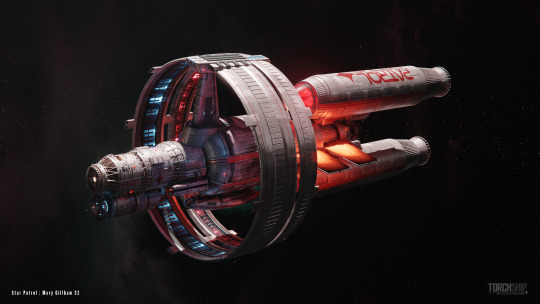
Tough little ship
By 2152, it had become clear that the Aquillian De-Militarised Zone was here to stay. A ceasefire intended to last until peace negotiations that never came. The Divine Empire, risen from the ashes of the old Aquillian Empire, officially refused to recognise the DMZ. But unofficially? They made it clear that so long as Humanity kept out of the DMZ, there would be no more hostilities.
The Florence Bailey program was soon established. Tasked with venturing inside the disputed territory, with the primary objective of reconnoitring Divine Empire operations, charting the DMZ, and attempting to make secret alliances with any civilisations inside the region. By secretly breaking the cease-fire, it was hoped the Florence Bailey program could, if not prevent another war, at least ensure Humanity was prepared for it. Secrecy being paramount, the Florence Bailey program utilised civilian ships, modified to appear like those belonging to vessels of various alien polities, alongside ‘acquired’ vessels of Aquillian and other alien origin.
While successful, the Florence Bailey program was rife with controversies. Including a minor political scandal when the Free Aquillian Republic Raptor Libre encountered Florence Bailey-4, a captured Raptor masquerading as Free Aquillian Republic Raptor Libre.

Aquillian Free Republic Raptor Libre. Or is it Florence Bailey-4?
In 2162, Humanity developed their first cloaking device, finally allowing Star Patrol to explore the DMZ without the headache of acquiring alien rockets, or offending its neighbours. The Mary Gillham program was born. It carried the same objectives as the Florence Bailey program, but now using purpose built vessels, and operating openly inside the DMZ as Star Patrol vessels, using cloaking technology to remain undetected by Divine Empire rockets or listening posts.
Mary Gillham rockets are built to contradictory standards, and Mary Gillham-32 is no exception. She needed a small profile and to appear non-threatening. Enough that if discovered, she would prompt a manageable diplomatic incident, rather than a full blown war. She also needed to be self sufficient, capable of cruising for months, potentially years, without resupply or official support, feature a cloaking device, advanced sensor systems, and be well enough armed to fend off rockets 3 times her size. How successful this was depends entirely on who you ask…

"You're shorter than I expected." - Mary Gillham-32 faces off against a Divine Empire Second Rate.
Mary Gillham-32 is one of the smallest interstellar rockets in Star Patrol, and carries the bare minimum crew complement of 4. All Star Patrol rockets are cramped, but Mary takes it to another level. Supplies and equipment are stashed anywhere and everywhere there’s room. Her moonchute (the zero gravity shaft used to navigate up and down decks) is claustrophobic, and her doors are often joked to have been designed by Martians to spite the tall.

Mary’s most important and defining feature is her cloaking device. Effectively a second, specialised variant of the FTL drive, though rather than warping space to allow for superluminal travel, the cloak warps space so steeply that it creates a bubble through which no light, heat, or tachyons can enter or escape. Effectively concealing the rocket in a tiny baby universe all to itself. Of course, this works both ways, while cloaked Mary is totally blind, relying solely on computer calculations to determine position, and a periscope in the form of a tethered drone that can be extended from the cloak bubble, at risk of detection.
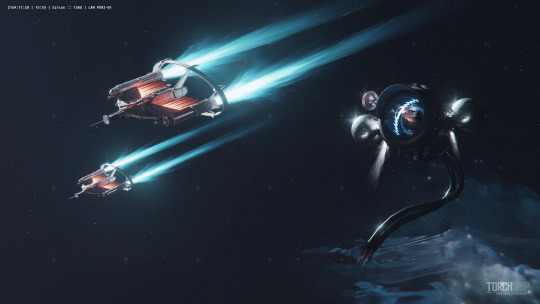
Mary's periscope observes a pack of Aquillian Raptors.
This lack of creature comforts is most obvious when it comes to the matter of armament. Too small to fit particle cannons or railguns, when it comes to combat Mary’s best hope is to cloak and escape. If that doesn’t work, she has a set of six externally mounted torpedo tubes. With no room for anything as wasteful as autoloaders, reloading is a process that takes the better part of a day. New torpedoes must be manufactured in stages in the matter printer, transported up the ship and out the cargo airlock, assembled in space, and then manually loaded into the tubes after being fitted with the desired warhead.
With only six shots, it’s imperative that even one torpedo is enough to end any fight. So, in addition to a supply of standard flak, nuclear and a handful of antimatter warheads. She also carries a small stock of Graviton bombs. An experimental warhead that creates a pseudo-singularity with an event horizon diameter measuring tens of kilometres. Anything caught within is utterly ripped apart. Mary may only have six shots, but she only needs one.
In short, Mary Gillham-32 is an undersized, overengineered, and overpowered rocket with an understaffed and overworked crew, embarked on a dangerous, politically dubious mission with no hope of reinforcements or aid if they encounter a problem. But whatever sticky situations their mission brief gets them into, the crew can rest assured that with a bit of clever thinking, Mary will get them out of it.
96 notes
·
View notes
Text
Un tânăr s-a filmat pe capota unei mașini de Poliție și a postat imaginile pe TikTok. Tanarul a fost dus la audieri ..
Un tânăr s-a filmat pe capota unei mașini de Poliție și a postat imaginile pe TikTok. Tanarul a fost dus la audieri ..
Un tânăr s-a filmat în timp ce stă pe capota unei mașini de Poliție și a postat imaginile pe TikTok. Polițiștii din Dolj s-au autosesizat și au deschis dosar penal în acest caz.
În imagini se vede cum tânărul se urcă pe capota mașinii de poliție, parcată pe marginea unui drum intens circulat. Poliția a comunicat că mașina era în service pentru reparații. ”La data de 15 octombrie a.c, ca urmare a…

View On WordPress
0 notes